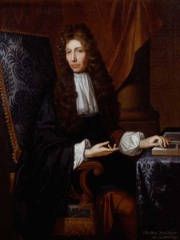
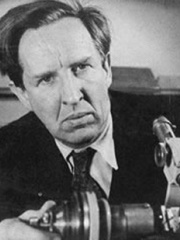
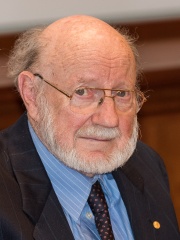
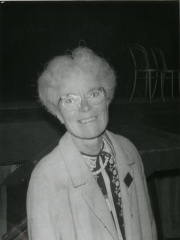
The Most Famous
CHEMISTS from Ireland
This page contains a list of the greatest Irish Chemists. The pantheon dataset contains 602 Chemists, 5 of which were born in Ireland. This makes Ireland the birth place of the 19th most number of Chemists behind Netherlands, and Canada.
Top 5
The following people are considered by Pantheon to be the most legendary Irish Chemists of all time. This list of famous Irish Chemists is sorted by HPI (Historical Popularity Index), a metric that aggregates information on a biography's online popularity.

1. Robert Boyle (1627 - 1691)
With an HPI of 80.93, Robert Boyle is the most famous Irish Chemist. His biography has been translated into 102 different languages on wikipedia.
Robert Boyle (; 25 January 1627 – 31 December 1691) was an Anglo-Irish natural philosopher, chemist, physicist, alchemist and inventor. Boyle is largely regarded today as the first modern chemist, and therefore one of the founders of modern chemistry, and one of the pioneers of modern experimental scientific method. He is best known for Boyle's law, which describes the inversely proportional relationship between the absolute pressure and volume of a gas, if the temperature is kept constant within a closed system. Among his works, The Sceptical Chymist is seen as a cornerstone book in the field of chemistry. He was a devout and pious Anglican and is noted for his works in theology.

2. J. D. Bernal (1901 - 1971)
With an HPI of 74.06, J. D. Bernal is the 2nd most famous Irish Chemist. His biography has been translated into 39 different languages.
John Desmond Bernal (; 10 May 1901 – 15 September 1971) was an Irish scientist who pioneered the use of X-ray crystallography in molecular biology. He published extensively on the history of science. In addition, Bernal wrote popular books on science and society. He was a communist activist and a member of the Communist Party of Great Britain (CPGB).

3. William C. Campbell (b. 1930)
With an HPI of 65.97, William C. Campbell is the 3rd most famous Irish Chemist. His biography has been translated into 55 different languages.
William Cecil Campbell (born 28 June 1930) is an Irish-American microbiologist known for his work in discovering a novel therapy against infections caused by roundworms, for which he was jointly awarded the 2015 Nobel Prize in Physiology or Medicine. He helped to discover a class of drugs called avermectins, whose derivatives have been shown to have "extraordinary efficacy" in treating River blindness and Lymphatic filariasis, among other parasitic diseases affecting animals and humans. Campbell worked at the Merck Institute for Therapeutic Research 1957–1990, and has become a research fellow emeritus at Drew University.

4. Kathleen Lonsdale (1903 - 1971)
With an HPI of 58.53, Kathleen Lonsdale is the 4th most famous Irish Chemist. Her biography has been translated into 31 different languages.
Dame Kathleen Lonsdale (née Yardley; 28 January 1903 – 1 April 1971) was an Irish crystallographer, pacifist, and prison reform activist. She proved, in 1929, that the benzene ring is flat by using X-ray diffraction methods to elucidate the structure of hexamethylbenzene. She was the first to use Fourier spectral methods while solving the structure of hexachlorobenzene in 1931. During her career she attained several firsts for female scientists, including being one of the first two women elected a Fellow of the Royal Society (FRS) in 1945 (along with Marjory Stephenson), first female professor at University College London, first woman president of the International Union of Crystallography, and first woman president of the British Association for the Advancement of Science.
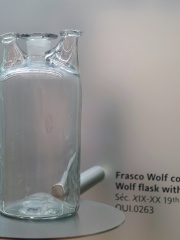
5. Peter Woulfe (1727 - 1803)
With an HPI of 58.22, Peter Woulfe is the 5th most famous Irish Chemist. His biography has been translated into 15 different languages.
Peter Woulfe (1727–1803) was an Anglo-Irish chemist and mineralogist. He first had the idea that wolframite might contain a previously undiscovered element (tungsten). In 1771, Woulfe reported the formation of a yellow dye when indigo was treated with nitric acid. Later it was discovered by others that he had formed picric acid, which eventually was used as the first synthetic dye, an explosive and an antiseptic treatment for burns. Woulfe is credited with inventing, around 1767, the Woulfe's bottle, an apparatus for purifying or dissolving gases, which employed a bottle with two or three necks.
People
Pantheon has 5 people classified as Irish chemists born between 1627 and 1930. Of these 5, 1 (20.00%) of them are still alive today. The most famous living Irish chemists include William C. Campbell. The most famous deceased Irish chemists include Robert Boyle, J. D. Bernal, and Kathleen Lonsdale.
Living Irish Chemists
Go to all RankingsDeceased Irish Chemists
Go to all RankingsRobert Boyle
1627 - 1691
HPI: 80.93
J. D. Bernal
1901 - 1971
HPI: 74.06
Kathleen Lonsdale
1903 - 1971
HPI: 58.53
Peter Woulfe
1727 - 1803
HPI: 58.22
Overlapping Lives
Which Chemists were alive at the same time? This visualization shows the lifespans of the 3 most globally memorable Chemists since 1700.

